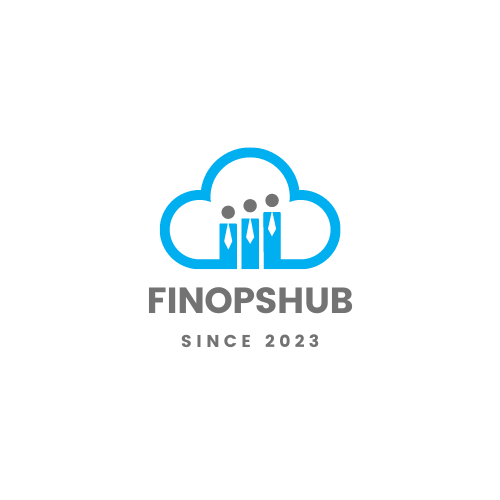For companies and IT professionals seeking to optimize expenses, understanding the driving forces behind cloud costs is essential. The global cloud services market, driven by its cost-effectiveness, enables organizations to achieve over 35% in annual operating cost savings (CloudSphere). This article addresses the top 10 cloud cost reduction strategies for 2024 and beyond.
Considerations for cloud costs include factors like compute, network connectivity, and storage capacity. Additional hidden costs such as data transfer fees, data retrievals, region and availability zone charges, support plans, and other incidental expenses also contribute to the overall cost.
| Cost Driver | Description |
|---|---|
| Compute | CPU and memory usage costs |
| Network Connectivity | Data transfer fees |
| Storage | Data storage costs |
| Hidden Costs | Retrieval fees, region charges |
To enhance profitability, companies should examine application data needs and capture only the minimally required data sets, thereby reducing network, storage, and data processing expenses (CloudSphere).
Top 10 Cloud Cost Reduction Strategies
Implementing best practices for cloud cost optimization can result in substantial savings. Here are some strategies to consider:
Tracking and Correcting Cost Anomalies: Regularly monitor and address cost anomalies to respond to cost challenges before they impact your budget.
Leveraging Reserved Instances and Savings Plans: Use Reserved Instances (RIs) and Savings Plans to secure significant pricing discounts, with savings of up to 75% and 70% on AWS usage, respectively (Spot.io). For a deeper dive, visit our guide on reserved instances vs on-demand pricing.
Implementing these best practices can help you achieve substantial savings and optimize your cloud environment.
For more strategies and tips on rightsizing cloud resources, proper utilization of spot instances and preemptible VMs, and eliminating inefficiencies, check out our detailed articles on these topics.
By maintaining a proactive approach to managing and optimizing cloud costs, organizations can effectively align their financial strategies with operational goals, ensuring a sustainable and cost-effective use of cloud resources.
For further insights into financial management in cloud computing, explore our comprehensive finops framework and understand the finops lifecycle for better decision-making and resource allocation.
Implementing Cost Reduction Strategies
Effectively managing cloud costs involves implementing strategies that optimize your resource usage and reduce unnecessary expenditures. Here are key strategies to elevate your savings game and achieve comprehensive cloud cost reduction.
Setting Budgets and Goals
Setting budgets is crucial for cloud cost optimization. It helps ensure all stakeholders understand the financial goals of each project, fostering effective communication and cost management. Establish clear budgets for different cloud resources and services, and track your spending against these budgets using cloud management tools.
| Budgeting Step | Description |
|---|---|
| Define Project Budgets | Allocate budgets by project or department |
| Track Spending | Use cloud management tools to monitor expenditures |
| Adjust Budgets | Modify budgets based on project needs and performance |
Learn more about cloud budgeting and forecasting.
Identifying Unused Resources
Identifying unutilized and idle resources is essential for optimizing cloud costs. Inventory your cloud resources regularly to find and eliminate unnecessary expenses associated with unused assets. Merging idle computing resources can further reduce costs.
| Resource Type | Common Unused Example |
|---|---|
| Compute | Idle VMs or Lambda functions |
| Storage | Unused storage volumes |
| Databases | Inactive or infrequently accessed databases |
For more information, visit our guide on eliminating cloud waste.
Right-Sizing Services
Right-sizing involves analyzing and modifying computing services to the most efficient size. Utilize tools that provide recommendations for changing instance sizes, families, or types to better match your performance needs, thereby reducing costs.
| Service | Right-Sizing Tool |
|---|---|
| EC2 | AWS Compute Optimizer |
| Azure VMs | Azure Advisor |
| Google Cloud VMs | Google Cloud Recommender |
Explore our detailed article on rightsizing cloud resources.
Leveraging Reserved Instances and Savings Plans
Leveraging Reserved Instances (RIs) and Savings Plans can provide significant cost savings. RIs offer pricing discounts of up to 75% compared to on-demand rates. Savings Plans, like AWS Savings Plans, allow you to save up to 70% on cloud usage.
| Cost Reduction Option | Potential Savings |
|---|---|
| Reserved Instances | Up to 75% |
| Savings Plans | Up to 70% |
Understand more about reserved instances vs on-demand pricing.
Monitoring and Addressing Cost Anomalies
Monitoring cost anomalies involves using management consoles with anomaly detection features. These tools use machine learning to identify unusual spending patterns, allowing you to set alerts and address root causes promptly.
| Monitoring Tool | Key Feature |
|---|---|
| AWS Cost Management Console | Cost Anomaly Detection |
| Azure Cost Management + Billing | Budget alerts and anomaly detection |
| Google Cloud Billing | Budgets and alerts |
To dive deeper, read our article on cloud cost management platforms.
Implementing these strategies can significantly impact your cloud cost efficiency and support your journey towards optimized financial operations within the cloud.
For a comprehensive framework, refer to our guide on the FinOps framework.





